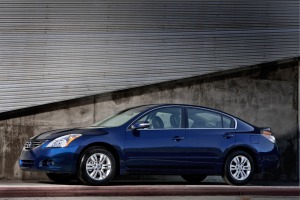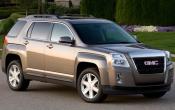(0 Comments)
Published: 01/21/2002
Updated: 08/21/2008
Using This Comparison This "leasing versus buying" comparison is an educational tool to make general comparisons of these two methods of obtaining a vehicle. It is not an advertisement for and does not describe a particular lease or loan. It does not include all of the terms of a lease or a loan. In many places, the identified costs do not include all fees and taxes. Please refer to the specifics of the lease and loan you are considering for the actual terms. To reduce the complexity of the comparisons, the advantages and disadvantages of purchasing a vehicle for cash are not included. However, most statements applicable to financing a vehicle also apply to purchasing it with cash.
Because of the close working relationship between the Federal Reserve Board (FRB) and the Association of Consumer Vehicle Lessors (ACVL), there are many similarities between the buying versus leasing information found on each group's Web site. We have been very privileged as an Association to have worked so closely with the FRB to help assure the completeness and accuracy of the FRB information.
Table of Contents
|
Leasing |
Buying/Financing |
| 1. Ongoing Costs |
During the lease, you have to pay your monthly payment, other fees for license and registration, any periodic taxes such as personal property taxes, insurance premiums, ongoing maintenance costs and any safety and emissions inspections.
- Monthly payment
- Vehicle insurance
- Maintenance
- Annual government fees
- Personal property tax
|
During the loan, you have to pay your monthly payment, other fees for licenses and registration, any periodic taxes such as personal property taxes, insurance premiums, ongoing maintenance costs and any safety and emissions inspections.
- Monthly payment
- Vehicle insurance
- Maintenance
- Annual government fees
- Personal property tax
|
| 2. Early Termination |
You are responsible for any early termination charges if you end the lease early, including any deficiency charges if you trade the vehicle.
- Disclosure requirements
- Early termination option
- Involuntary termination
- Calculation of early termination charges
- Amount of early termination charges
- Reasons for early termination charges
- Early termination charge methods
- Options at early termination
- Examples for early termination
|
You are responsible for the payoff amount if you end the loan early, including any deficiency charges if you trade the vehicle.
- Disclosure requirements
- Payoff option
- Involuntary termination
- Calculation of loan payoff amount
- Reasons for payoff deficiency
- Payoff methods
- Options at loan payoff
|
|
Options at Early Termination You typically have three options at voluntary early termination:
- Return the vehicle to the lessor and pay any early termination charges due.
- Trade in the vehicle to a third party (such as a dealer or leasing company). If the proceeds exceed your lease balance, you can apply the excess to your lease or purchase of another vehicle or receive the excess in cash. If there is a shortfall, you are responsible for this deficiency. If you buy or lease another vehicle, you may be able to include this deficiency as part of the amount financed (if you finance the purchase of another vehicle) or the gross capitalized cost (if you lease another vehicle).
- Negotiate a sales price with a third party and then request that this person exercise any early termination purchase option. You would then receive any positive difference in the negotiated price over the purchase option price form the third party or pay any deficiency.
- Exercise any early termination purchase option, resell the vehicle, and use the proceeds to offset what you paid for the vehicle.
|
Options at Loan Payoff Generally, you have three options if you decide to prepay your loan:
- Pay off the loan and keep the vehicle.
- Trade in the vehicle to a third party (such as a dealer). If the trade-in value of the vehicle is higher than the loan payoff amount, the third party will refund this difference to you or apply it toward your new vehicle purchase or lease. If the trade-in value is less than the loan payoff amount, you are responsible for this deficiency. You can pay this deficiency or ask the third party to add it to the amount financed (if you finance the purchase of another vehicle) or the gross capitalized cost (if you lease another vehicle).
- Sell the vehicle (if permitted by your contract) and use the proceeds to pay off your loan.
|
| 3. Vehicle Maintenance and Excess Wear |
Lease agreements generally require you to follow all manufacturer maintenance requirements. Typically, you pay separately for vehicle maintenance. Most leases limit the amount of wear to the vehicle. If you return the vehicle, you will probably have to pay extra charges if you exceed those limits.
- Typical lease requirements
- Vehicle changes
- Vehicle maintenance
|
Finance agreements may require you to follow all manufacturer maintenance requirements. Failing to do so may affect the warranty protection. Typically, you pay separately for vehicle maintenance. There are usually no limits or charges for excessive wear to the vehicle, but excessive wear will lower the vehicle's trade-in or resale value.
- Typical finance requirements
- Vehicle changes
- Vehicle maintenance
|
|
|
|
Lease vs. Finance Models Information about leasing versus buying vehicles often includes a comparison of costs and features of these options ("lease versus buy models" or "models"). These models may be helpful as a starting point in deciding whether to lease or buy. However, they usually have three major limitations. They may do any of the following:
- Exclude your personal preferences (subjective factors)
- Exclude some important factors and thus may be incomplete and simplistic
- Include factors that are complex and difficult to specify with accuracy.
|
Content courtesy of The Association of Consumer Vehicle Lessors. ©2001 The Association of Consumer Vehicle Lessors. All rights reserved.






